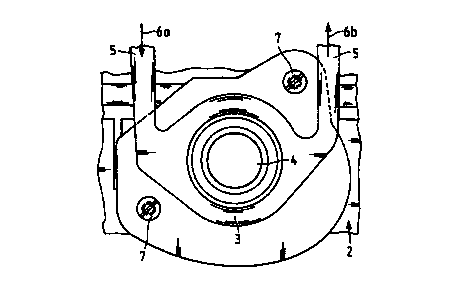Some of the information on this Web page has been provided by external sources. The Government of Canada is not responsible for the accuracy, reliability or currency of the information supplied by external sources. Users wishing to rely upon this information should consult directly with the source of the information. Content provided by external sources is not subject to official languages, privacy and accessibility requirements.
Any discrepancies in the text and image of the Claims and Abstract are due to differing posting times. Text of the Claims and Abstract are posted:
| (12) Patent Application: | (11) CA 2304023 |
|---|---|
| (54) English Title: | SYSTEM FOR RECIRCULATING EXHAUST GAS IN AN INTERNAL COMBUSTION ENGINE |
| (54) French Title: | DISPOSITIF POUR LE RECYCLAGE DES GAZ D'ECHAPPEMENT DANS UN MOTEUR A COMBUSTION INTERNE |
| Status: | Deemed Abandoned and Beyond the Period of Reinstatement - Pending Response to Notice of Disregarded Communication |
| (51) International Patent Classification (IPC): |
|
|---|---|
| (72) Inventors : |
|
| (73) Owners : |
|
| (71) Applicants : |
|
| (74) Agent: | NORTON ROSE FULBRIGHT CANADA LLP/S.E.N.C.R.L., S.R.L. |
| (74) Associate agent: | |
| (45) Issued: | |
| (86) PCT Filing Date: | 1998-09-12 |
| (87) Open to Public Inspection: | 1999-03-25 |
| Availability of licence: | N/A |
| Dedicated to the Public: | N/A |
| (25) Language of filing: | English |
| Patent Cooperation Treaty (PCT): | Yes |
|---|---|
| (86) PCT Filing Number: | PCT/EP1998/005820 |
| (87) International Publication Number: | EP1998005820 |
| (85) National Entry: | 2000-03-16 |
| (30) Application Priority Data: | ||||||
|---|---|---|---|---|---|---|
|
The invention relates to a system for recirculating exhaust gas in an internal
combustion engine. A connecting line (4; 10, 13; 26) for the recirculated
exhaust gas is connected to an intake pipe (2; 15; 22), cooling elements being
arranged in between. The cooling element may be e.g., a cooling channel (5;
18; 19; 25) for liquid coolant, integrated into the flange-type connection
joining the connecting line (4; 10, 13; 26) to the intake pipe (2; 15; 22), or
may be another heat conductive element.
L'invention concerne un dispositif pour le recyclage des gaz d'échappement dans un moteur à combustion interne, dispositif dans lequel une conduite de liaison (4; 10; 13; 26) destiné aux gaz d'échappement recyclés est rattaché à un tube d'aspiration (2; 15; 22), des éléments de refroidissement étant placés entre cette conduite et ce type d'aspiration. Un tel élément de refroidissement peut être, par exemple, un canal de refroidissement (5; 18; 19; 25) à liquide de refroidissement, qui est intégré au raccordement du typer bride reliant la conduite de liaison (4; 10, 13; 26) au tube d'aspiration, ou bien un autre élément thermoconducteur.
Note: Claims are shown in the official language in which they were submitted.
Note: Descriptions are shown in the official language in which they were submitted.

2024-08-01:As part of the Next Generation Patents (NGP) transition, the Canadian Patents Database (CPD) now contains a more detailed Event History, which replicates the Event Log of our new back-office solution.
Please note that "Inactive:" events refers to events no longer in use in our new back-office solution.
For a clearer understanding of the status of the application/patent presented on this page, the site Disclaimer , as well as the definitions for Patent , Event History , Maintenance Fee and Payment History should be consulted.
| Description | Date |
|---|---|
| Inactive: IPC deactivated | 2019-01-19 |
| Inactive: First IPC assigned | 2018-02-22 |
| Inactive: IPC assigned | 2018-02-22 |
| Inactive: IPC assigned | 2018-02-22 |
| Inactive: IPC assigned | 2018-02-22 |
| Inactive: IPC assigned | 2018-02-22 |
| Inactive: IPC assigned | 2018-02-22 |
| Inactive: IPC expired | 2016-01-01 |
| Inactive: IPC from MCD | 2006-03-12 |
| Application Not Reinstated by Deadline | 2003-09-12 |
| Time Limit for Reversal Expired | 2003-09-12 |
| Deemed Abandoned - Failure to Respond to Maintenance Fee Notice | 2002-09-12 |
| Inactive: Cover page published | 2000-06-08 |
| Inactive: First IPC assigned | 2000-06-06 |
| Letter Sent | 2000-06-02 |
| Inactive: Courtesy letter - Evidence | 2000-05-16 |
| Inactive: Notice - National entry - No RFE | 2000-05-10 |
| Application Received - PCT | 2000-05-08 |
| Inactive: Single transfer | 2000-04-27 |
| Application Published (Open to Public Inspection) | 1999-03-25 |
| Abandonment Date | Reason | Reinstatement Date |
|---|---|---|
| 2002-09-12 |
The last payment was received on 2001-08-14
Note : If the full payment has not been received on or before the date indicated, a further fee may be required which may be one of the following
Patent fees are adjusted on the 1st of January every year. The amounts above are the current amounts if received by December 31 of the current year.
Please refer to the CIPO
Patent Fees
web page to see all current fee amounts.
| Fee Type | Anniversary Year | Due Date | Paid Date |
|---|---|---|---|
| Basic national fee - standard | 2000-03-16 | ||
| Registration of a document | 2000-04-27 | ||
| MF (application, 2nd anniv.) - standard | 02 | 2000-09-12 | 2000-09-12 |
| MF (application, 3rd anniv.) - standard | 03 | 2001-09-12 | 2001-08-14 |
Note: Records showing the ownership history in alphabetical order.
| Current Owners on Record |
|---|
| FILTERWERK MANN & HUMMEL GMBH |
| Past Owners on Record |
|---|
| THOMAS JESSBERGER |